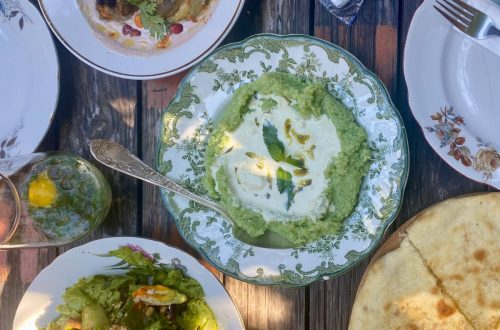
The BEST Egyptian Dishes to Try on your Next Visit
Egypt is the land of pyramids, pharaohs, and rich history. However, did you know that this wonder of a country also offers some of the best food you will ever try? If you are planning a visit, make sure to indulge in the best Egyptian dishes that you will find in this guide.
Travel Insurance for Egypt
One of the first things that has to come to your mind when planning a trip is insurance.
Safetywing’s Nomad Insurance is one of the best options available out there. With a maximum coverage of 365 days, they are a great option whether you are a Nomad or not! They offer very low rates, but excellent coverage and immediate support (in a few minutes!). The best part? Nomad Insurance can be purchased even if you have left your home country already.
Lastly, they also cover extreme sports, something that can come in very handy if you are an adventurous soul.
How does Egyptian Food Reflect its culture and history?
Egyptian food is more than just a means to fill the belly – it’s a delicious dialogue of culture and history. Egypt’s rich and diverse culinary traditions stretch back to the time of the Pharaohs. The Nile River’s fertile lands have nourished a civilization that has been feasting on the fruits of its bounty for centuries, creating a palette of flavors that is as diverse as its history.
Key staples of the Egyptian diet such as lentils, chickpeas, and beans indicate the practicality and resourcefulness of early Egyptian civilizations which needed hearty crops that could flourish in the desert climate. The popularity of dishes like Ful medames, made from mashed fava beans, dates back to Pharaonic times and is still a beloved breakfast meal today.
Moreover, Egypt’s cultural exchanges and interactions over the course of history have significantly influenced its food. For instance, the Ottoman Empire left its imprint with dishes like shawarma, while the Italian rule brought pasta to the Egyptian table.
Besides direct historical influences, the Egyptian cuisine is a testament to cultural exchange. The Greeks, Romans, Arabs, Turks and the French have all contributed to what you sample as ‘Egyptian food’ today. You’ll find baklava, a syrupy pastry introduced by the Turks, on most dessert menus, just as you’ll come across Ful Medames, a breakfast staple that has been in the Egyptian diet since the Pharaohs.
Egypt’s unique geographical location connecting Africa, the Middle East, and the Mediterranean also plays a role. This unique crossroads position has facilitated flavor fusions, with seafood from the Mediterranean, spices from the East, and grains from Africa. This exchange is evident in dishes like Kushari – an unusual meeting of lentils, pasta, rice, chickpeas, and tomato salsa, garnished with crispy fried onions.
In essence, every whisper of spice, every grain, every stew relays a story – a story of connection, exchange, unity, endurance, and of course, deliciousness.
What are some Egyptian food traditions that I should know about?
As a visitor to Egypt, you’ll find that food is a celebration of the country’s centuries-old traditions and rich culture. Before finding out the best Egyptian dishes, you should know that very dish tells a story and each custom follows certain traditions around its preparation and consumption.
The cornerstone of an Egyptian meal is bread, locally known as ‘Eish Baladi’. It is a part of the everyday life and tradition in Egypt. Often, you’ll witness the locals break the bread and share with others as a sign of community and love.
One of the most important food traditions revolves around the holy month of Ramadan. During this period, Egyptians fast from sunrise to sunset. At sunset, the fast is broken with an Iftar meal, which includes dates and water followed by a variety of soups, salads, meat dishes and desserts. It is a grand affair and the city comes alive with the spirit of togetherness and generosity.
Invited to an Egyptian’s home? Remember, before trying the best Egyptian dishes, it is traditional to bring a gift for the host, perhaps something sweet like ‘Basbousa’ or ‘Kanafa’. Also, Egyptians value community, so meals will often involve sharing from common platters. So, dig in and enjoy the experience, it will be a culinary adventure that’s bound to be unforgettable!
What are the Health Benefits of Egyptian food?
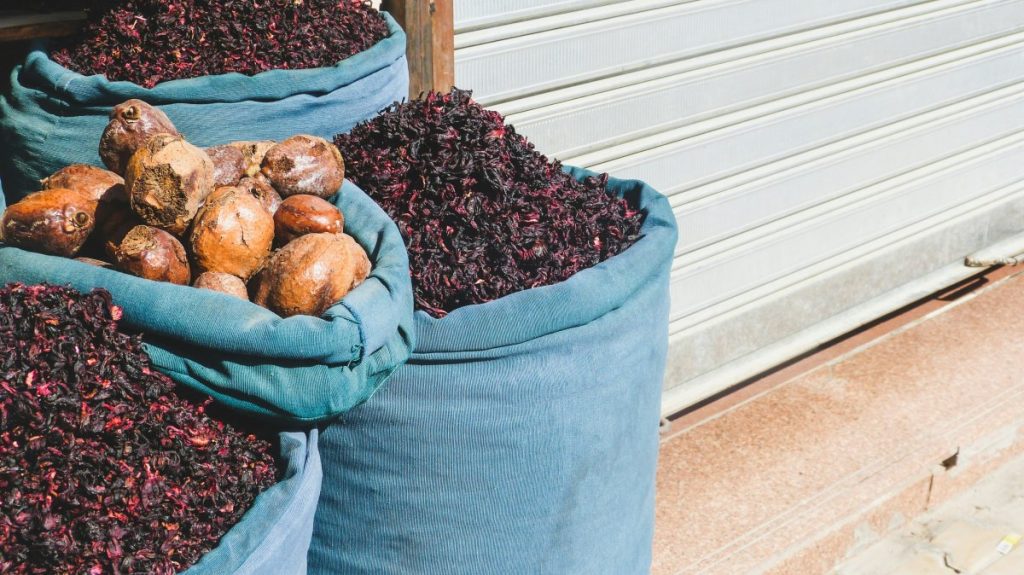
It’s hard to overlook the fact that Egyptian cuisine is not only incredibly flavorful, it’s also packed with nutrients that can boost your health. Predominantly plant-based, their dishes incorporate a plethora of fruits, vegetables, legumes, and grains that are a rich source of vitamins, minerals, and fiber. Consequently, it can support heart health, promote good digestion, and help maintain a healthy weight.
The typical Egyptian diet (And of course the best Egyptian dishes) is inherently rich in fiber, which can aid digestion and prevent constipation. A diet dominated by fruits, vegetables, legumes, and whole grains can also aid in maintaining heart health and weight, reducing the risks associated with obesity and heart disease. The healthy fats found in sesame seeds, nuts, olive oil, and fish are additionally beneficial for heart health.
Another noteworthy aspect of Egyptian cuisine is the minimal use of processed or artificial ingredients. The majority of traditional dishes are crafted from scratch with fresh, locally sourced, and organic ingredients, considerably reducing unhealthy fat and sugar intake.
Not to forget, the wide usage of spices in the Egyptian kitchen. They introduce not just a depth of flavor but also introduce a series of medicinal properties. For example, turmeric, ginger, garlic, and cinnamon are common spices that have potent anti-inflammatory and antioxidant effects.
What Kinds of Spices are commonly used in Egyptian Dishes?
In the aromatic world of Egyptian cuisine, spices play a central role. These flavorful additions add depth to dishes, build complex flavor profiles, and even carry health benefits. Let’s explore some of the indispensable spices found in Egyptian kitchens.
Cumin is an essential spice, celebrated for its nutty and warm flavor. Often, it’s ground and sprinkled into soups and stews, or used as a key ingredient in spice mixes like dukkah. This spice is also revered for its health properties – it’s believed to aid digestion and act as a rich source of iron.
Another cornerstone of Egyptian cuisine is Coriander. Used both as a fresh herb and a ground spice, coriander lends a citrusy note to numerous dishes. Meanwhile, ground coriander seeds, with their warm and sweet flavor, often find their way into meat and vegetable dishes.
Cardamom, with its intense, slightly sweet flavor, is a favored addition in sweet and savory dishes, as well as in traditional coffees. Then there’s Sumac. Known for its tangy, lemony taste, it’s often sprinkled over salads and meat dishes.
The Egyptian spice repertoire also features Turmeric – the bright yellow spice integral to many curry powders. Turmeric is lauded for its earthy flavor and potential health benefits, including anti-inflammatory properties.
Finally, there’s Anise – often brewed into an uplifting tea, or used in desserts for its distinctive sweet, licorice-like flavor.
So, the next time you delve into an Egyptian dish, take a moment to appreciate the symphony of spices at play. Each one contributes to the flavorful mosaic that is Egyptian cuisine – a satisfying blend of culinary traditions and spice-laden history.
The Best Egyptian Dishes you HAVE to Try
1. Ful Medames – A Breakfast Staple
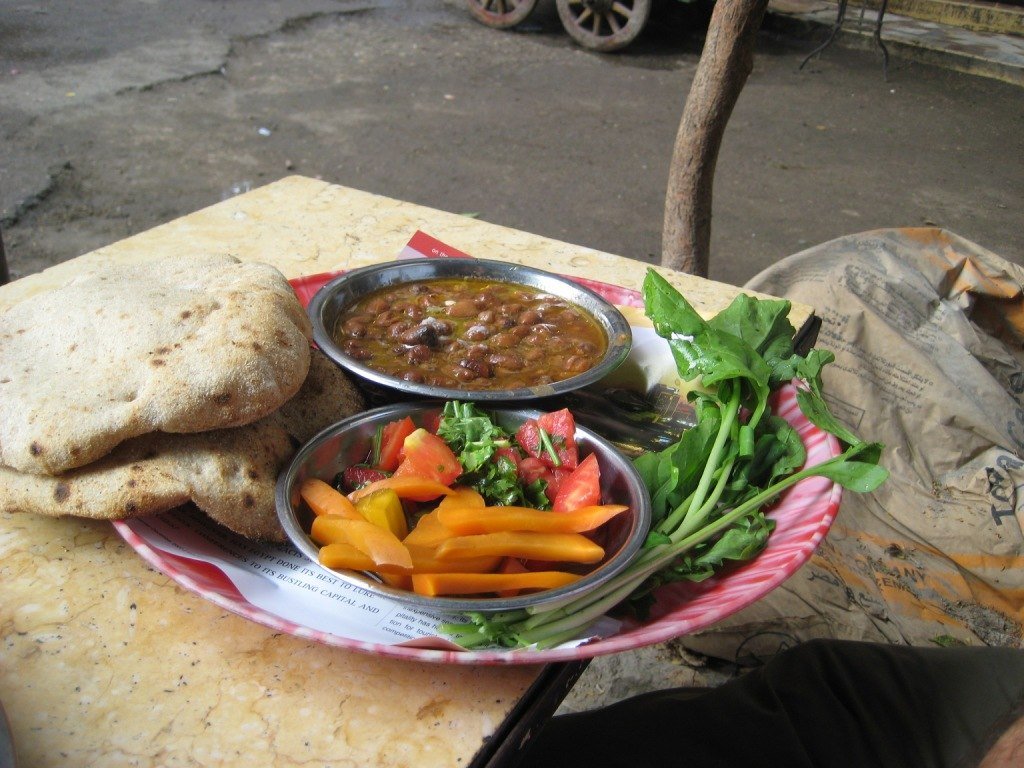
Start your day like a true Egyptian with Ful Medames, a traditional breakfast dish that dates back centuries. It consists of slow-cooked fava beans seasoned with garlic, lemon juice, and olive oil. Ful is surely one of the best Egyptian dishes out there!
Locals often eat it with pita bread and sometimes top it with chopped tomatoes, onions, and boiled eggs. This simple yet nutritious dish has been essential to Egyptian culture for generations and is the perfect fuel to kickstart your adventures.
2. Molokhia – The Green Soup
One mustn’t neglect the importance of Molokhia in Egyptian cuisine. This soup-like dish is made from finely chopped Molokhia leaves, a leafy green vegetable commonly known in the Western world as Jew’s mallow or Nalta jute. This delicacy offers a slimy yet irresistible texture that leaves a unique aftertaste for the adventurous palate.
Traditionally, it’s cooked with various aromatic ingredients like garlic, coriander, and sometimes even a hint of spicy peppers. Chicken or rabbit meat is often added to the stew but it can also be served vegetarian. Molokhia is usually ladled over rice and eaten with Egyptian bread, fulfilling not only your stomach but also your senses with its captivating aroma.
If you’re up for a gastronomic adventure, finding and enjoying a bowl of Molokhia should undoubtedly mark a highlight of your journey as it is considered one of the best Egyptian dishes.
3. Koshary – The Egyptian Comfort Food
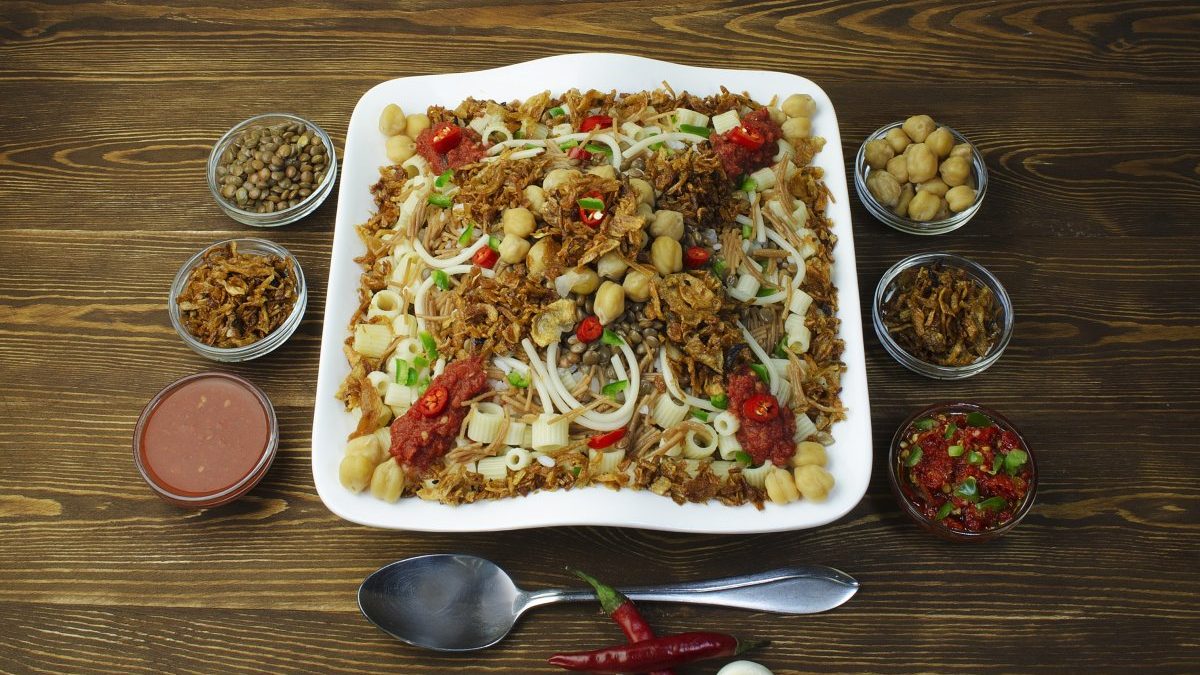
This one is among my favorite Egyptian dishes! Koshary is Egypt’s ultimate comfort food, a dish that captures the essence of Egyptian street cuisine.
This delectable dish blends perfectly cooked rice, lentils, macaroni, and chickpeas, topped with a tangy tomato sauce, crispy fried onions, and a drizzle of spicy chili sauce. Egyptians have mastered the art of creating a harmonious blend of textures and flavors in this humble yet hearty dish.
Whether you savor it at a local eatery or a street-side stall, Koshary will warm your heart and fill your stomach. While in Cairo, you should definitely head to Abu Tarek; their Koshary is just amazing!
4. Shawarma – The Lovely Sandwich
Shawarma is a delectable street food that, though originating from the Middle East, has made quite a home in Egypt. It’s nearly impossible to take a stroll through Cairo without the aroma of spiced, marinated meat, slowly roasting on a vertical spit, wafting through the air.
Shawarma consists of thinly sliced cuts of meat, such as beef or chicken, that are piled onto a large cone-like spit and then slow-roasted to perfection over the day. As the outer layers of the meat get cooked, they are shaved off and served up in a warm flatbread with a mix of fresh veggies, tangy pickles, and a drizzle of tahini or garlic sauce.
What sets the Egyptian Shawarma apart is the unique blend of spices used in marinating the meat. Each recipe is a closely guarded secret, varying from one vendor to the next, giving each Shawarma its own distinctive flavor.
An interesting tidbit about Shawarma is that it’s considered a fantastic late-night snack (And not just one of the best Egyptian dishes). After a long day of sightseeing or a night of dancing in Cairo, there’s nothing quite like grabbing a juicy Shawarma on your way back to the hotel.
5. Mahshi – A Vegetarian Treasure
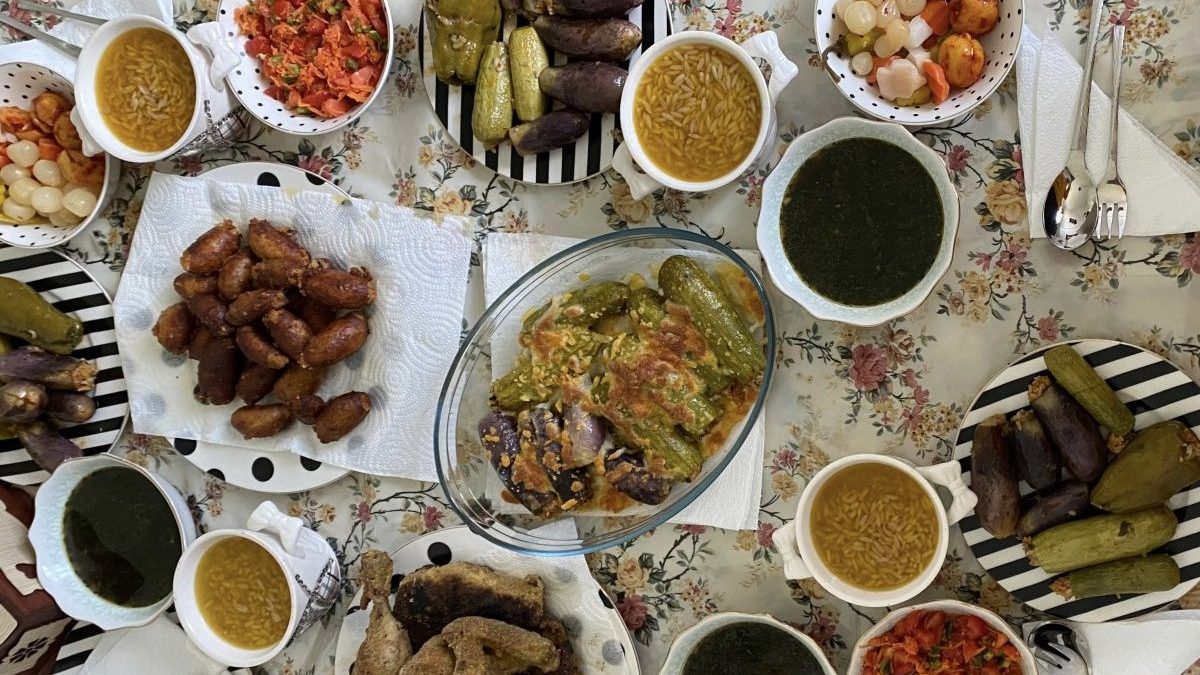
Vegetarians, your attention, please! Egypt has an abundance of delicious vegetarian dishes, and Mahshi is a standout among them. This delightful dish consists of vegetables such as bell peppers, zucchini, eggplant, and vine leaves, stuffed with a spiced rice and herb mixture.
The stuffed vegetables are then simmered in a flavorful tomato sauce until tender. Each mouthful is a burst of wholesome goodness showcasing the country’s variety of fresh produce.
6. Ta’ameya – The Egyptian Falafel
You can’t talk about Egyptian food without mentioning Ta’ameya, the local take on what’s often known as falafel. Instead of chickpeas, the Egypt-style falafel is made from mashed fava beans. The seasoned bean mixture is rolled into balls or patties, coated with sesame seeds, and then deep-fried to golden-brown perfection.
What sets it apart is its rich and herbaceous flavor profile blended with the crunchy texture on the outside and a fluffy interior. In Egypt, there’s hardly a breakfast table that doesn’t include Ta’ameya, often paired with an assortment of pickled vegetables, tahini sauce, and fresh pita bread.
If you’re looking to try a portion of authentic Egyptian street food, don’t miss out on this one. The next time you’re meandering through bustling Cairo streets, follow your nose to the nearest street vendor, and ask for this star of Egyptian fast food. Vegans and vegetarians need not worry; Ta’ameya is plant-based, making it a deliciously satisfying and health-conscious choice.
7. Roz Bel Laban – Creamy Rice Pudding
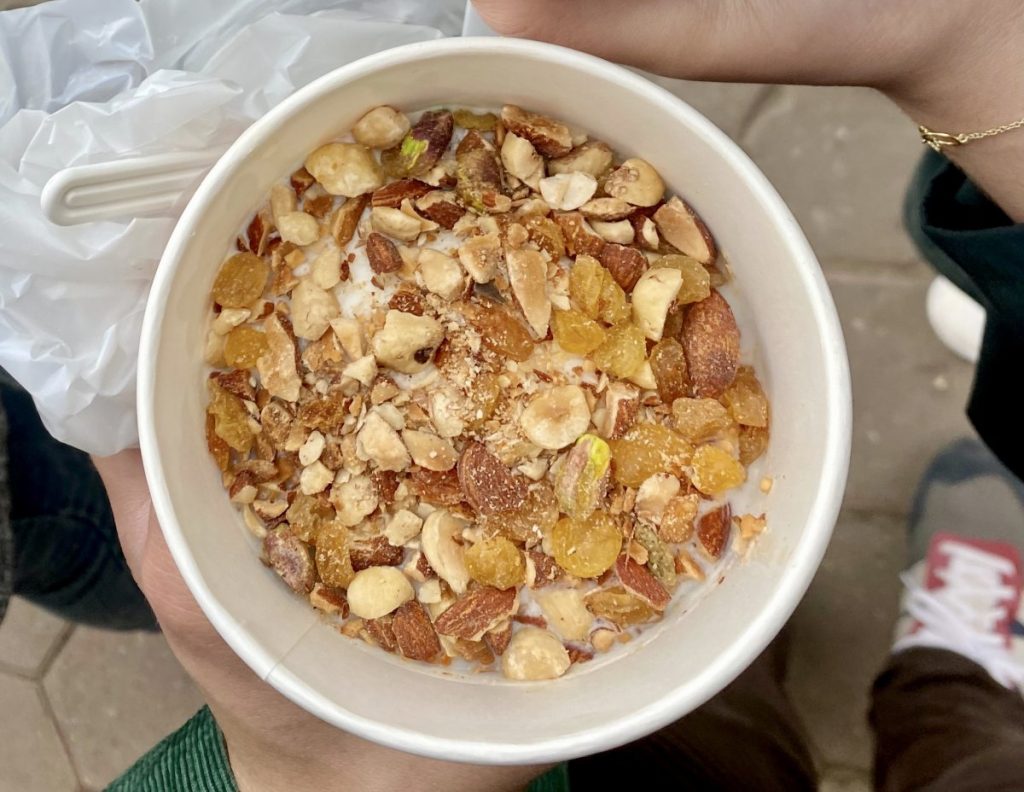
Another personal favorite! Roz Bel Laban is a classic Egyptian dessert loved by both young and old. This velvety rice pudding is made by slowly cooking rice in milk until it reaches a rich and creamy consistency.
Scented with vanilla and often garnished with a sprinkle of ground cinnamon or chopped nuts, Roz Bel Laban is a delightful way to end a meal on a sweet note. It’s comfort food at its finest. We had the best one in Alexandria!
8. Om Ali – The Lovely Desert
With a name that literally translates to “Ali’s Mother”, Om Ali is a masterpiece that brings the sweet side of Egypt directly to your plate. It’s a delightful dessert that is esteemed as one of Egypt’s most popular.
Imagine a rich, warming and creamy bread pudding, speckled with decadent chunks of puff pastry. Sprinkle on top a hearty handful of assorted nuts like pistachios, almonds, and hazelnuts, aided by a hefty addition of raisins, coconut flakes, and a drizzle of sweetened condensed milk. All of this is baked to a golden perfection, resulting in a textually intriguing and flavor-rich dish that’s guaranteed to satisfy your sweet tooth.
Typically enjoyed after a hearty meal or during celebratory occasions, Om Ali is not just a dessert – it’s a comforting staple that carries a lot of tradition and history. Once you have your first spoonful of this sweet delight, you’ll understand why it’s beloved by Egyptians and why it’s one of the best Egyptian dishes.
9. Fiteer Meshaltet – Egyptian Pastry Perfection
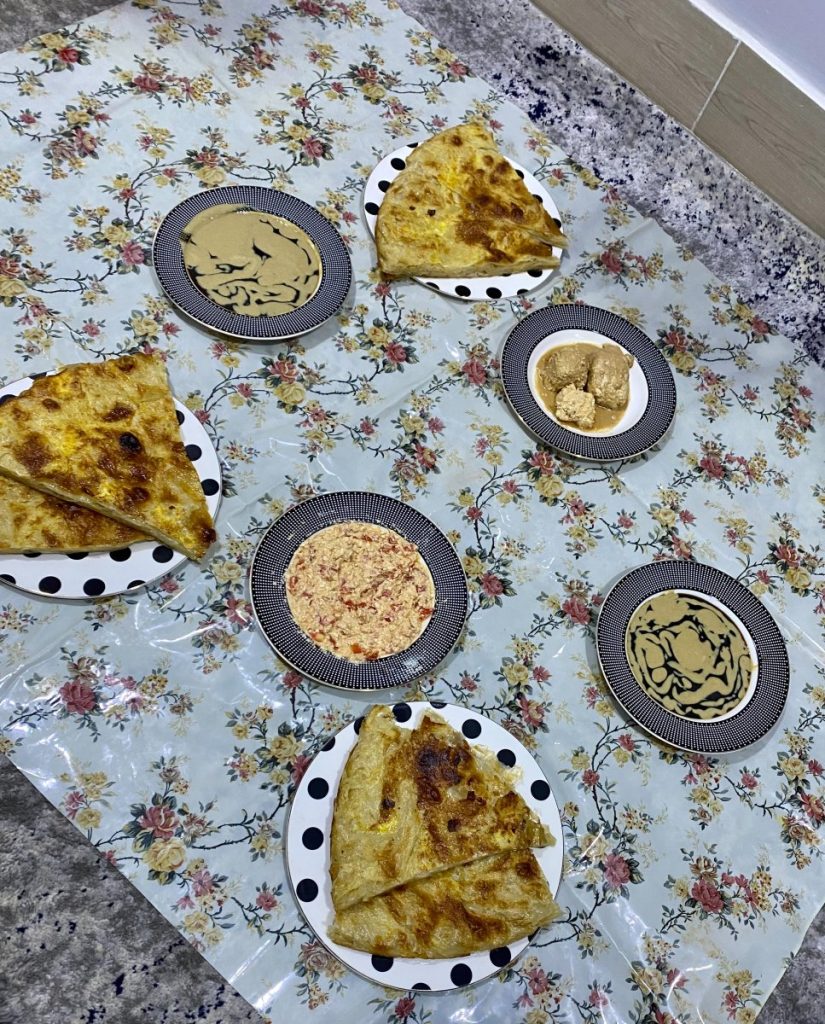
The last of the best Egyptian dishes to try on your next visit! If you have a love for pastries, Fiteer Meshaltet is a must-try treat. This flaky, layered pastry is similar to a croissant but with a uniquely Egyptian twist.
Fiteer Meshaltet can be served as sweet or savory. Various fillings such as cheese, honey, nuts, or minced meat can be used. Whether enjoyed as a breakfast item or an afternoon snack, this delicious pastry will leave you wanting more.
10. Hawawshi – A Meaty Pleasure
The authentic Egyptian delight that is Hawawshi deserves special attention. Picture a delicious, piping hot pita bread, stuffed with an addictively flavourful mixture of minced meat and a melange of spices like onions, peppers, and parsley. The filling is truly a riot of flavors, hitting all the right notes of savoury, aromatic, and spicy. Once prepared, the bread is then baked to a perfect golden-brown finish, making it an irresistibly appetising dish – too tempting to give a miss.
There’s something truly special about eateries in Egypt where the Hawawshi is baked to order in traditional ovens right in front of your eyes – the sight is as captivating as the taste. Served with a side of pickled vegetables and tahini sauce, it makes for a wholesome, filling meal that’s big on taste and will leave you wanting more.
What are some traditional Egyptian drinks to try?
Without a doubt, a major part of any cuisine is the beverages that accompany it. How about combining the best Egyptian dishes with some refreshing drinks?
1. Tamarind Juice
A tangy, refreshing choice of beverage, tamarind juice is popular in Egypt, especially during the scorching summers. It’s made from tamarind pulp, sugar, and water. Light and revitalizing, the sweet-sour flavor makes it truly distinctive.
2. Sugarcane Juice
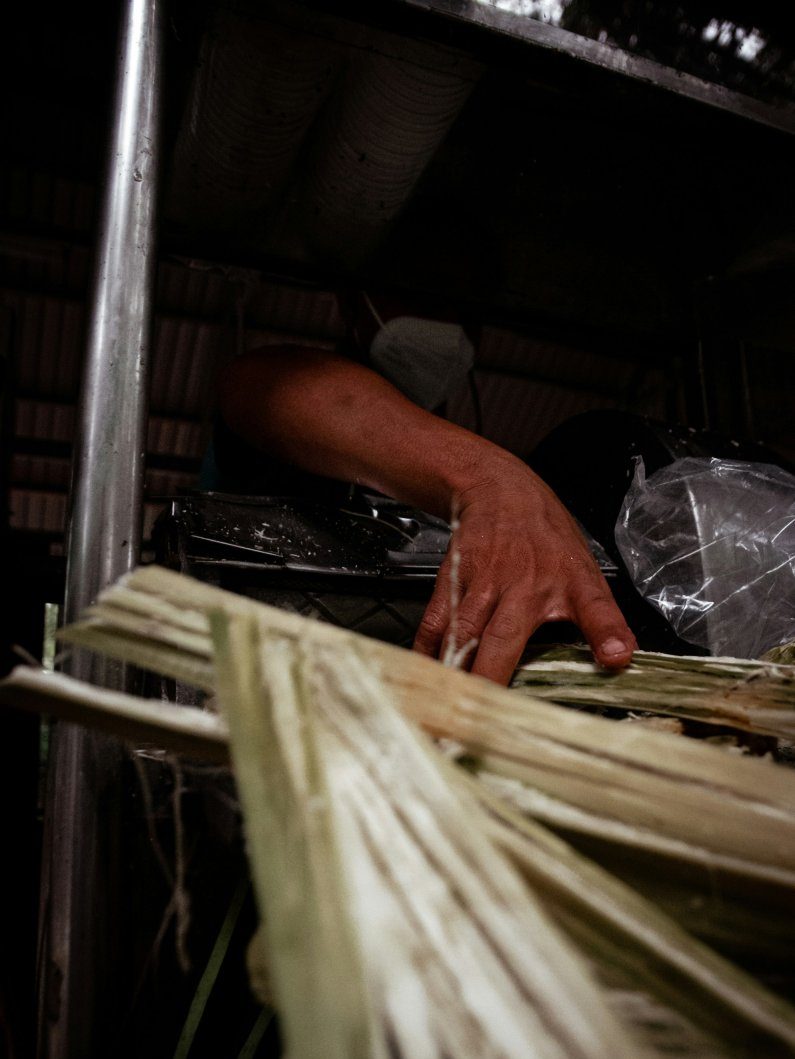
A widely consumed drink in Egypt, it’s extracted from fresh sugarcane, making it incredibly sweet. Often, a dash of lemon is added for some tang. It’s common to find street vendors selling freshly squeezed sugarcane juice that’s chillingly refreshing.
3. Sahlab
A delightful, creamy winter drink, Sahlab has a thick, custard-like consistency. Made from orchid root flour, milk, sugar, and sprinkled with nuts and cinnamon, this distinctive warm beverage has a unique, slight vanilla-like flavor.
4. Karkade
Alternatively known as hibiscus tea, Karkade is an herbal tea that can be served hot or cold. The crimson brew is rich in Vitamin C and is believed to have numerous health benefits.
Beyond just pleasing your palate, these traditional Egyptian drinks give you an authentic taste of the country’s culture. Just a sip, and you’ll understand why these beverages are an integral part of Egyptian life.
What are Some Egyptian Dishes Suitable for Kids?
Indeed, Egyptian cuisine is not just for adults. The rich gastronomy also takes care of younger ones as well with its diverse and kid-friendly dishes. Let’s take a look at some of these that children would surely love.
1. Egyptian Pizza (Fiteer Baladi)
Highly similar to pizzas but with an Egyptian flair, Fiteer Baladi is made of flaky pastry dough accompanied by an array of toppings such as cheese, veggies, and sweet options like honey and nuts. With its blend of savory and sweet variations, it’s no wonder why it’s a hit among the kids. Surely one of the best Egyptian dishes for the younger ones!
2. Aish Baladi
This is an Egyptian version of whole wheat bread that is usually eaten with different kinds of dips and sauces. Aish Baladi can also be filled with veggies or cheese which makes it not just an enjoyable meal for kids, but also a healthy option.
Final Thoughts
Egyptian cuisine offers a variety of flavors, colors, and textures that reflect the country’s rich history and cultural diversity. From the comforting Koshary to the satisfying Ful Medames, and the creamy Roz Bel, Egypt’s delights will leave a lasting impression on any food lover.
So, as you explore the best Egyptian dishes, think about the history and tradition that lies beneath them. Bon appétit!



